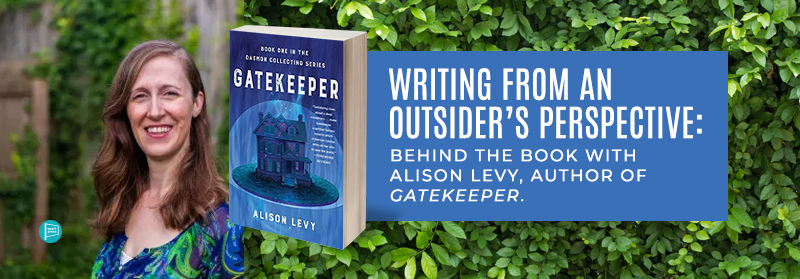
In my book, Gatekeeper, my main character, Rachel, happens across a lavish wedding. I describe this occasion as I imagine a wedding should be: a bride in a white gown, a groom in a tuxedo, and a beautifully decorated event hall. The wedding has family and friends dressed to the nines, music and dancing, and lots of food, flowers, cake, and wine.
Upon seeing this celebration, Rachel is repulsed and wishes she could go home.
What are Culture Glasses?
In a college anthropology class, I learned about the concept of Kulturbrille, a German term taken from Kultur(“culture”) and Brille (“glasses”), coined by anthropologist Franz Boas (1858-1942). It refers to the invisible glasses through which each person views the world, glasses shaped by the culture in which that person is raised, glasses that affect how each person sees the rest of the world. It’s a term used to explain how spending all our time in a familiar culture blinds us from seeing what’s right in front of us. What we see through our Kulturbrille is our normal, our truth. Taking a fresh look at the most ordinary parts of our lives means removing our culture glasses to see our day-to-day experiences through someone else’s lenses. It may sound like a daunting task for writers to apply this concept to their stories, but you don’t need to spend years studying anthropology to see beyond your culture glasses. It boils down to a three step process: 1) Establish what’s “normal” through your own culture glasses, 2) Expand your horizons to see beyond your glasses, and then 3) Take a second look, if necessary through your character’s fictional culture glasses.
Consider the example from my book. Since I told the story largely from Rachel’s point of view and she is from another dimension, I had to look at the wedding reception with alien eyes. To do this, I start with my baseline normal which, in this case, is the event as I described it. Your mental image of a typical wedding may be different than mine, but whatever you’re picturing, odds are that’s what you were brought up to view as normal.
Removing Your Culture Glasses
Next, I need to remove my culture glasses so I can make my own culture unfamiliar. This can be difficult, so I find it helpful to create fictional culture glasses. Since I was creating a character from a different background, this was an essential process, but it’s also a helpful exercise just to rewire your point of view. Research is crucial in this step; learning about other cultures is the best way to shed new light on our own. For the cited wedding example, there are oodles of customs from around the world to draw upon! In Shinto weddings, the couple exchange three different cups of sake. Nigerian weddings often observe the custom of aso-ebi, wherein family members wear the same print to designate their relationship to the bride or groom. The Mosuo people in China have no wedding traditions because, historically, they have not practiced marriage. Learning about other beliefs and rituals makes it a lot easier to take a step back from your own and recognize that what’s normative to one person is not universal.
When researching, always look for descriptions written about your culture by outsiders. Though it’s often difficult to track down an account of the exact thing you’re researching, it’s easy enough to come across lists of things foreigners find strange about your country. History and fiction are also excellent sources of cultural material. Unless you’re planning on citing a specific custom in your writing, it’s not important if what you learn is fact. You’re researching for ideas and inspiration, not accuracy.
How I Removed My Culture Glasses in Gatekeeper
In my book, in response to seeing the wedding reception, I had Rachel recall a wedding-like celebration her family threw in honor of a new person joining their clan. Like the wedding in our world, this event had guests, but none of them were dressed up. Her family’s event had lots of food, but it was a potluck, every guest bringing something to share. It had music and dancing, but only because some of the guests brought instruments to play. To Rachel, within the world I created, this is what’s normal, this is what’s true.
With your cultural perspective broadened by research and worldbuilding, take a second look at your baseline normal. As tempting as it may be to explicitly draw comparisons between the two events, that’s generally not how people think. The average outside observer doesn’t spend time considering how and why this is different from what they grew up with. The average observer knows what is normal and true for him/her and sees all else as weird, wonderous, or wrong. The greater the differences between the cultures, the stronger the reaction. When Rachel looks at the wedding reception, it’s so very different from her truth—so opulent, so formal, so pointless—that she’s disgusted and quickly becomes homesick. From behind her culture glasses, what she sees is not a joyful celebration but an unpleasant, wasteful gathering of alien strangers that makes her look down her nose at these people as she longs for familiar surroundings.
Conclusion
Writing from an outsider’s perspective is challenging. Being fully immersed in a culture for all our lives means it takes some work to see it for the intricate, bizarre tapestry that it is. The good news is, once you’ve managed to remove your culture glasses for the first time, each subsequent time gets easier. Before long, you’ll be spontaneously dropping your Kulturbrille and noticing interesting cultural foibles everywhere you look. You’ll be amazed how your improved ability not only shifts your perception but enhances the quality of your writing.

Leave A Comment